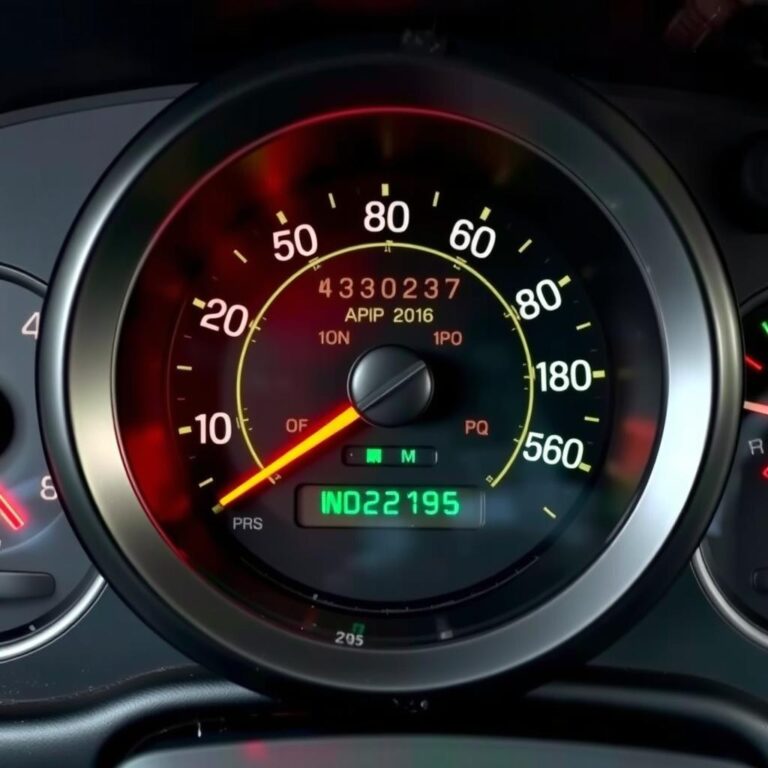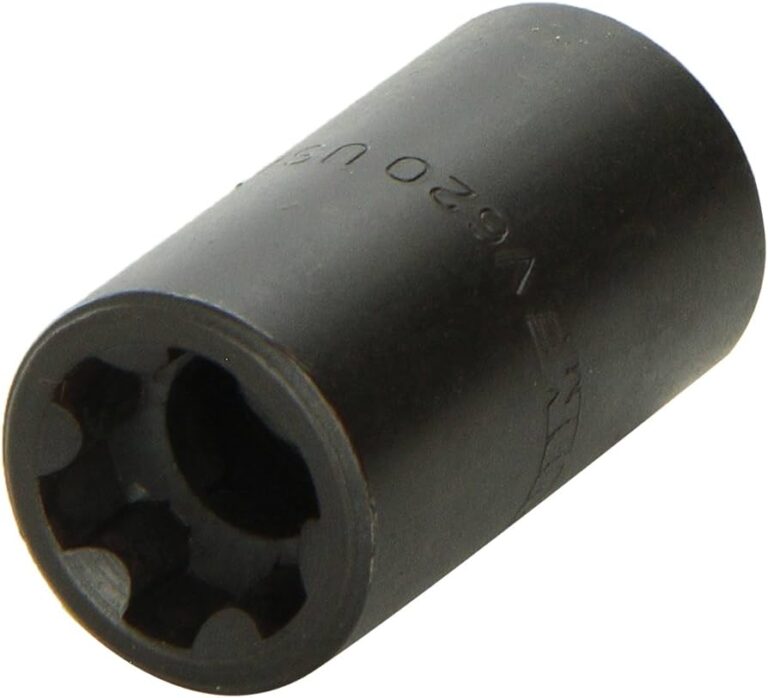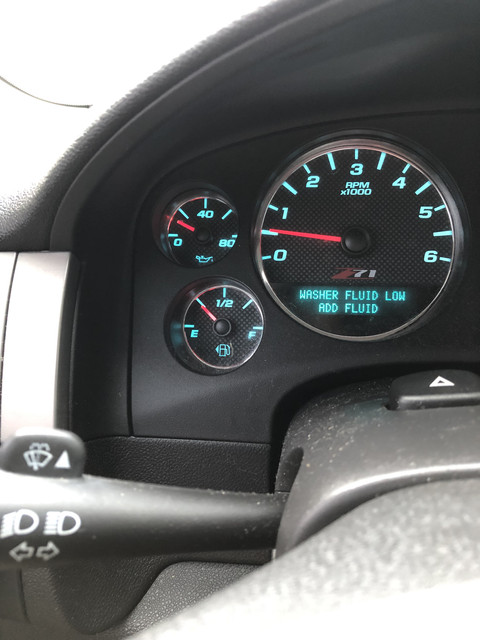How To Recalibrate 1996 Chevy Silverado Speedometer?
Ever wondered how to recalibrate your 1996 Chevy Silverado speedometer?
Maybe your speedometer’s been acting wonky, and you’re tired of guessing your actual speed in your ’96 Silverado.
Why Recalibrate Your 1996 Chevy Silverado Speedometer?
Let’s be real, an inaccurate speedometer on your 1996 Chevy Silverado isn’t just annoying; it can lead to speeding tickets or even affect your truck’s performance.
Recalibrating ensures your speedometer accurately reflects your vehicle’s speed, keeping you safe and within the legal limits.
Common Reasons for Speedometer Inaccuracy in a ’96 Silverado
So, why does this happen in the first place?
Here’s a breakdown:
- Tire Size Changes: Upgrading to larger or smaller tires than stock can throw off your speedometer reading.
- Gear Ratio Swaps: Changing the gear ratio in your differential affects the relationship between the axle’s rotation and the vehicle’s speed.
- Sensor Malfunctions: A faulty Vehicle Speed Sensor (VSS) can send incorrect data to the speedometer.
- Instrument Cluster Issues: Sometimes, the problem lies within the instrument cluster itself.
Tools You’ll Need to Recalibrate Your ’96 Silverado Speedometer
Before diving into the process, gather these essentials.
Having the right tools on hand will make the job smoother:
- Basic Hand Tools: Screwdrivers, sockets, and wrenches are a must.
- Scan Tool: A scan tool or code reader capable of reading vehicle speed data is essential.
- Digital Multimeter: For testing the VSS, a multimeter comes in handy.
- Wiring Diagram (Optional): A wiring diagram for your ’96 Silverado can be beneficial for diagnosing sensor issues.
Steps to Recalibrate Your 1996 Chevy Silverado Speedometer
Alright, let’s get down to business.
Here’s a step-by-step guide to recalibrating your 1996 Chevy Silverado speedometer.
Remember, safety first – disconnect the negative battery terminal before starting any electrical work.
- Diagnose the Issue: Use a scan tool to read the vehicle speed data and compare it to your actual speed (use a GPS app on your phone as a reference). If there’s a significant difference, proceed to the next steps.
- Check the VSS: Locate the Vehicle Speed Sensor (usually on the transmission). Use a multimeter to test its output signal while the wheels are turning. Refer to your Silverado’s service manual for the correct testing procedure.
- Inspect Wiring: Check the wiring harness and connectors leading to the VSS for any signs of damage, corrosion, or loose connections. Repair or replace as needed.
- Recalibration Options:
- Aftermarket Calibrators: Consider using an aftermarket speedometer calibrator. These devices plug into your Silverado’s wiring and allow you to adjust the speedometer reading to match your actual speed.
- EEPROM Programming: In some cases, the speedometer’s calibration data is stored in an EEPROM chip within the instrument cluster. You may need to consult a professional who specializes in EEPROM programming to recalibrate it.
- Test and Verify: After recalibrating, take your Silverado for a test drive and compare the speedometer reading to your actual speed (using a GPS). Fine-tune the calibration until it’s accurate.
Troubleshooting Common Speedometer Problems in Your ’96 Silverado
Still facing issues?
Here are some common problems and how to tackle them:
- Speedometer Needle Fluctuates: This often indicates a faulty VSS or a loose connection in the wiring.
- Speedometer Reads Zero: Check the VSS fuse and the sensor itself. A completely dead sensor will need replacement.
- Inconsistent Readings: Could be a sign of a failing instrument cluster or a problem with the engine control unit (ECU).
Recalibrating your 1996 Chevy Silverado speedometer might seem daunting, but with the right tools and a bit of patience, you can get your speed readings back on track.
If you’re not comfortable tackling this yourself, don’t hesitate to seek professional help.
 “`html
“`html
Ever wondered how to recalibrate your 1996 Chevy Silverado speedometer?
Maybe your speedometer’s been acting wonky, and you’re tired of guessing your actual speed in your ’96 Silverado.
Why Recalibrate Your 1996 Chevy Silverado Speedometer?
Let’s be real, an inaccurate speedometer on your 1996 Chevy Silverado isn’t just annoying; it can lead to speeding tickets or even affect your truck’s performance.
Recalibrating ensures your speedometer accurately reflects your vehicle’s speed, keeping you safe and within the legal limits.
Common Reasons for Speedometer Inaccuracy in a ’96 Silverado
So, why does this happen in the first place?
Here’s a breakdown:
- Tire Size Changes: Upgrading to larger or smaller tires than stock can throw off your speedometer reading.
- Gear Ratio Swaps: Changing the gear ratio in your differential affects the relationship between the axle’s rotation and the vehicle’s speed.
- Sensor Malfunctions: A faulty Vehicle Speed Sensor (VSS) can send incorrect data to the speedometer.
- Instrument Cluster Issues: Sometimes, the problem lies within the instrument cluster itself.
Tools You’ll Need to Recalibrate Your ’96 Silverado Speedometer
Before diving into the process, gather these essentials.
Having the right tools on hand will make the job smoother:
- Basic Hand Tools: Screwdrivers, sockets, and wrenches are a must.
- Scan Tool: A scan tool or code reader capable of reading vehicle speed data is essential.
- Digital Multimeter: For testing the VSS, a multimeter comes in handy.
- Wiring Diagram (Optional): A wiring diagram for your ’96 Silverado can be beneficial for diagnosing sensor issues.
Steps to Recalibrate Your 1996 Chevy Silverado Speedometer
Alright, let’s get down to business.
Here’s a step-by-step guide to recalibrating your 1996 Chevy Silverado speedometer.
Remember, safety first – disconnect the negative battery terminal before starting any electrical work.
- Diagnose the Issue: Use a scan tool to read the vehicle speed data and compare it to your actual speed (use a GPS app on your phone as a reference). If there’s a significant difference, proceed to the next steps.
- Check the VSS: Locate the Vehicle Speed Sensor (usually on the transmission). Use a multimeter to test its output signal while the wheels are turning. Refer to your Silverado’s service manual for the correct testing procedure.
- Inspect Wiring: Check the wiring harness and connectors leading to the VSS for any signs of damage, corrosion, or loose connections. Repair or replace as needed.
- Recalibration Options:
- Aftermarket Calibrators: Consider using an aftermarket speedometer calibrator. These devices plug into your Silverado’s wiring and allow you to adjust the speedometer reading to match your actual speed.
- EEPROM Programming: In some cases, the speedometer’s calibration data is stored in an EEPROM chip within the instrument cluster. You may need to consult a professional who specializes in EEPROM programming to recalibrate it.
- Test and Verify: After recalibrating, take your Silverado for a test drive and compare the speedometer reading to your actual speed (using a GPS). Fine-tune the calibration until it’s accurate.
Troubleshooting Common Speedometer Problems in Your ’96 Silverado
Still facing issues?
Here are some common problems and how to tackle them:
- Speedometer Needle Fluctuates: This often indicates a faulty VSS or a loose connection in the wiring.
- Speedometer Reads Zero: Check the VSS fuse and the sensor itself. A completely dead sensor will need replacement.
- Inconsistent Readings: Could be a sign of a failing instrument cluster or a problem with the engine control unit (ECU).
Recalibrating your 1996 Chevy Silverado speedometer might seem daunting, but with the right tools and a bit of patience, you can get your speed readings back on track.
If you’re not comfortable tackling this yourself, don’t hesitate to seek professional help.
Diving Deeper: Understanding Your 1996 Chevy Silverado Speedometer System
Let’s break down the nuts and bolts of your ’96 Silverado’s speedometer system.
Knowing how it ticks helps you troubleshoot like a pro.
The Vehicle Speed Sensor (VSS): The Heart of the Matter
The VSS is crucial when you want to recalibrate your 1996 Chevy Silverado speedometer.
This little guy is usually screwed into the transmission housing.
It’s job? To send a signal to your truck’s computer (PCM) about how fast the output shaft is spinning.
That info gets translated into your speed on the dash.
Key Takeaway: A bad VSS = bad speed readings.
The PCM Connection: Translating Data into Speed
The Powertrain Control Module (PCM) takes the signal from the VSS.
Then, it does some math based on your truck’s programming.
This calculation considers things like tire size and gear ratio.
Finally, the PCM sends the correct speed information to your instrument cluster.
Why this matters? If the PCM has incorrect programming, even a good VSS won’t give you accurate speedometer readings when you go to recalibrate your 1996 Chevy Silverado speedometer.
Instrument Cluster: Displaying Your Speed
The instrument cluster is what you see in front of you.
It takes the signal from the PCM and moves that needle.
Sometimes, the cluster itself can be the problem if you want to recalibrate your 1996 Chevy Silverado speedometer.
It can suffer from electrical issues or internal component failures.
Advanced Recalibration Techniques for Your ’96 Silverado
So, you’ve tried the basics.
Still need to recalibrate your 1996 Chevy Silverado speedometer?
Let’s get a bit more technical.
Aftermarket Speedometer Calibrators: A Detailed Look
Aftermarket calibrators are your best friend for tire and gear changes.
These devices intercept the VSS signal before it reaches the PCM.
You can then tweak the signal to compensate for your modifications.
This ensures your speedometer is accurate.
- Installation: Usually plug-and-play, connecting into the VSS wiring.
- Programming: Some use dials, others connect to a computer for precise adjustments.
- Benefits: Corrects speedometer readings, improves shift points (if your truck is automatic), and prevents error codes.
EEPROM Programming: For the Advanced User
The EEPROM (Electrically Erasable Programmable Read-Only Memory) chip inside your instrument cluster stores the speedometer’s calibration data.
Adjusting this data requires specialized equipment and know-how.
Proceed with caution!
When to consider this? If other methods fail, or if you suspect the original calibration data is corrupted.
Disclaimer: This is best left to professionals.
Incorrect EEPROM programming can brick your instrument cluster.
Fine-Tuning and Verifying Your ’96 Silverado Speedometer Calibration
After any recalibration, verification is key.
Don’t just assume it’s correct!
- GPS Verification: Use a GPS app on your phone or a dedicated GPS device.
Compare your speedometer reading to the GPS speed at various speeds (e.g., 30 mph, 50 mph, 70 mph). - Highway Markers: On the highway, use mile markers to check your odometer accuracy.
Your odometer is directly related to your speedometer calibration. - Scan Tool Data: A scan tool can display the vehicle speed reported by the PCM.
Compare this to your speedometer reading.
Preventing Future Speedometer Issues in Your ’96 Silverado
Maintenance goes a long way.
Here’s how to keep your speedometer accurate for the long haul:
- Regular VSS Inspection: Check the VSS and its wiring during routine maintenance.
Look for damage, corrosion, or loose connections. - Proper Tire Inflation: Underinflated tires can slightly affect your speedometer reading.
Keep them properly inflated. - Consistent Tire Size: If you replace your tires, stick with the same size or a size that’s very close to the original.
When to Call in the Pros for Speedometer Recalibration
Sometimes, DIY isn’t the answer.
Here’s when you should seek professional help:
- You’re Not Comfortable: If you’re not confident working on your truck’s electrical system, don’t risk it.
- You’ve Tried Everything: You’ve checked the VSS, wiring, and tried basic recalibration, but the speedometer is still inaccurate.
- You Suspect Instrument Cluster Issues: Instrument cluster problems can be tricky to diagnose and repair.
- EEPROM Programming is Needed: This requires specialized equipment and expertise.
FAQ About Speedometer Recalibration on a ’96 Chevy Silverado
Q: Will changing my tire size affect my ’96 Silverado’s speedometer?
A: Absolutely.
Larger tires mean the wheels cover more ground per revolution, making your speedometer read slower than your actual speed.
Smaller tires have the opposite effect. That’s why you would want to recalibrate your 1996 Chevy Silverado speedometer.
Q: How do I find the Vehicle Speed Sensor (VSS) on my ’96 Silverado?
A: The VSS is typically located on the transmission housing, usually near the rear.
Consult your Silverado’s service manual for the exact location.
Q: Can a faulty ABS sensor affect my speedometer?
A: In some vehicles, yes, because the ABS system uses wheel speed sensors that also feed data to the speedometer.
However, on a ’96 Silverado, the VSS is the primary source of speed information.
But, it’s still worth checking ABS sensors for related issues.
Q: Is it legal to drive with an inaccurate speedometer?
A: It depends on your local laws.
Generally, it’s illegal to drive with a speedometer that’s significantly inaccurate, as it can lead to speeding and other violations.
Best to recalibrate your 1996 Chevy Silverado speedometer right away.
Q: How much does it cost to recalibrate a speedometer professionally?
A: Costs vary depending on the shop and the complexity of the job.
Expect to pay anywhere from $100 to $400 or more, especially if EEPROM programming or instrument cluster repairs are involved.
Conclusion
Recalibrating your 1996 Chevy Silverado speedometer ensures you’re driving safely and legally.
Whether you tackle it yourself or seek professional help, getting accurate speed readings is crucial.
Don’t let a wonky speedometer ruin your ride – take action and get it dialed in.
With some careful troubleshooting and the right tools, you can successfully recalibrate your 1996 Chevy Silverado speedometer.
“`



